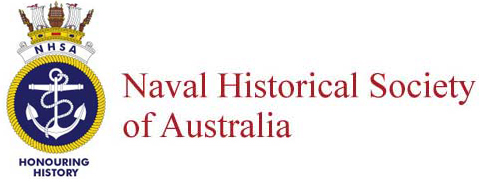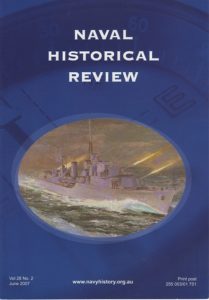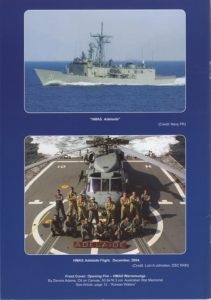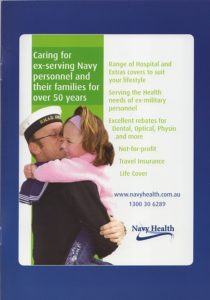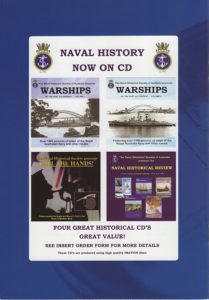- Author
- Issacs, Keith, AFC, ARAeS, Group Captain, RAAF (Retd)
- Subjects
- Naval Aviation
- Tags
-
- RAN Ships
- HMAS Adelaide I, HMAS Brisbane I, HMAS Australia I, HMAS Sydney I, HMAS Melbourne I
- Publication
- December 1973 edition of the Naval Historical Review (all rights reserved)
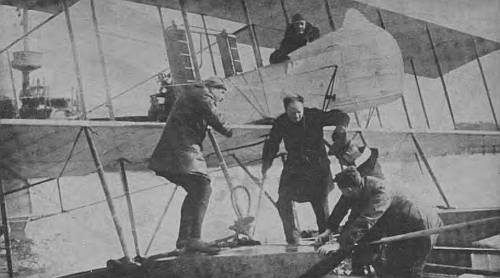
On 21 May Brisbane and Raven II, together with HMS Exmouth, left the area to escort a convoy from Bombay to the Red Sea. In June Brisbane was ordered back to Australia, by which time the Sopwith Baby had been returned to its parent unit, the East Indies Squadron. In October Brisbane was rushed to Tulagi following the Seeadler incident and the capture of von Luckner’s crew in the area – it was at Tulagi that Captain Cumberlege made his plea for seaplanes as mentioned in the heading of this chapter. Cumberlege was extremely interested in the use of aircraft after his experiences with the Sopwith Baby, and he repeatedly advocated their employment in the defence of Australia. In June 1918, while on patrol off northern Queensland, he visited Torres Strait and ‘ . . . spent Wednesday in search of suitable sites for aeroplane work and found two admirable places. Torres Straits could be swept by aeroplanes with the greatest facility . . . any ships thinking to close the Straits with a view to passing through by night could be located very simply by aeroplanes during daytime . . . I am aware that there are no seaplanes available, or would suggest their use as being preferable to land machines owing to the calm surface of the sea to be found practically anywhere in this neighbourhood.’
It is interesting to record that the Australian Naval Board submitted a request for a quote on the cost of four Sopwith Baby Seaplanes. The inquiry produced a price – £1,734.15.0 for each aircraft – but no encouragement from the Admiralty. ‘The use of small seaplanes from cruisers is not recommended,’ said Admiralty, and ‘ . . . in any case, the type is dying out.’ The reply also stated that experiments were in progress ‘ . . . in connection with aeroplanes in cruisers.’ Nothing more came of the matter and so 1917 saw the one and only association Brisbane had with shipborne aircraft during the 1914-18 War.
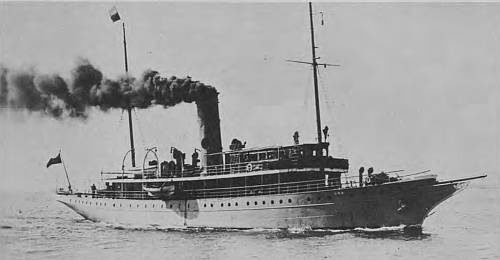
Sopwith Ship’s Pup (Refer 36) Although, as mentioned, the Sopwith Pup was used by the Royal Flying Corps and Royal Air Force, it was originally produced – like its predecessor the 1½ Strutter – for the Royal Naval Air Service. The prototype Pup, 3691, went to Furness for evaluation trials in the spring of 1916, and this aircraft was later exhibited in America in December 1917. The first production Pups were delivered as fighting scouts to No. 1 Wing, Royal Naval Air Service, at Dunkirk where an Australian scored an early success. On 24 September 1916 Flight Sub-Lieutenant S.J. Goble took off two minutes after several German aircraft had bombed the base, caught up with an LVG two-seater and shot it down in flames near Ghistelles. No. 8 Squadron, Royal Naval Air Service, began operating Pups in October 1916, and it was while flying one of the ‘Naval Eight’ scouts the following month that Sub-Lieutenant R.A. Little shot down the first of his 47 enemy aircraft. In February 1917 the Grand Fleet Aircraft Committee recommended that Pup landplanes replace Sopwith Baby seaplanes in carriers and other appropriate types of warships. Thus the Sopwith Ship’s Pup came into being.
This aircraft was equipped with flotation gear and either an upward firing machinegun, or eight Le Prieur anti-Zeppelin rockets. The Ship’s Pups established quite a number of naval ‘firsts’, but from an Australian viewpoint the Pup is remembered as the machine in which Squadron Commander H.R. Busteed did so much naval pioneer flying. Busteed’s experiments have been described by the historian J.M. Bruce in War Planes of the First World War Volume I, and accompanying photographs show Pup Type 9901 (N.6453), and two types 9901a (9497 and N.6190) which were both fitted with skids in place of wheels. Busteed himself is pictured beside a Beardmore-built Folding Pup on HMS Furious in another book by pioneer naval aviator W.G. Moore, Early Bird.
Another noted Australian serving with the Royal Navy at this time was Captain J.S. Dumaresq, who was born in Sydney on 26 October 1873. He was Rear-Admiral commanding the Royal Australian Navy when he died in 1922 (the first Australianborn officer to achieve this appointment), and a street in the Canberra suburb of Dickson honours the name of his family forebears who were early Australian pioneers. In 1917 Dumaresq was keenly interested in the development of naval aviation and he played an important part in arranging several flying trials. On 2 April 1917 Dumaresq took over command of Sydney at Rosyth, Scotland, at a time when he was advocating the use of scout aircraft from light cruisers to combat Zeppelins. His case was conveniently strengthened a month later, on 4 May, when a Zeppelin climbed out of range of Sydney’s anti-aircraft guns and continued to bomb the ship at its leisure.
